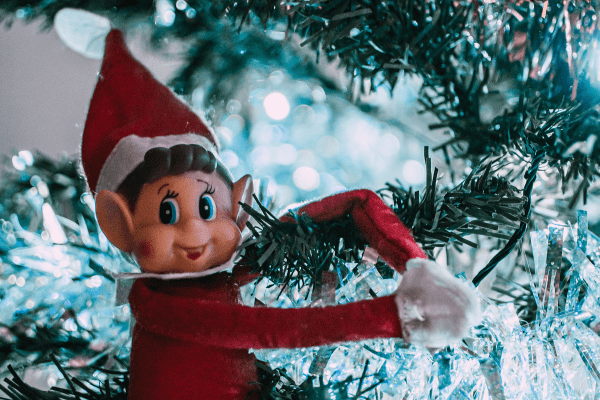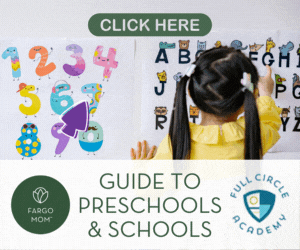
In 2005, a new magical Christmas tradition was born with the arrival of Carol Aebersold and Chanda Bell’s book, Elf on the Shelf.
The story is simple, your Elf on the Shelf’s job is to keep an eye on you and report back to Santa with any good or bad behavior. Its intention is to help encourage children to behave during the Christmas season.
Quickly, parents were setting up elaborate scenes in which the elf would be mischievous, funny, or downright naughty.
Every December 1st through the 25th, photos and videos of kids discovering their elf’s antics flood social media. It may make you wonder how parents have the energy and time to not only dream up these things, but make them happen.
For some, this may come naturally and easily. But if you’re like me and the idea of creating any more magic during the holiday season make your eyes start twitching, keep reading for the fun and low-key way I make it work.
My Inspiration
My kids were born one to three years after Elf on the Shelf became big, so this phenomenon was not on my radar. Instead, the concept of a Kindness Elf was what I first came across. No hijinks, no massive (or small!) messes, or daily Santa reports.

The idea is to highlight ways to be kind and spread the spirit of Christmas over the season. This spoke to me more than an elf who told Santa if you were naughty or not.
Our Elf Tradition
If you already have an Elf on the Shelf then you’re set!
Back in 2013 I did not have one, so I quickly whipped up our own elf and named her Noelle. (She is a composite of pipe cleaners, felt, a pinch of stuffing, and yarn.)
In the beginning, I would write a short note every Sunday that said something about that specific week in Advent and things my children could do to embody the spirit of Christmas. For the rest of the days, I’d write a short note that complimented a way in which they were kind/sweet/generous and something they could do to make someone else’s day brighter.
Sometimes I would write a question to make them think about the spirit of Christmas or what it meant to give. Even though they were pretty young, their answers were fantastic and really made me think. 
Noelle, of course, would bounce around places in our house, but not anywhere super fancy. She hid in the tree, bookshelves, bathroom, in their stockings, etc.
What does the commitment look like for this kind of venture?
Elf on the Shelf Timeline
December 1st
Noelle arrives with a note and Advent calendars.
December 2nd-23rd
Noelle pops in a different spot with a simple note that might say, “Hey I bet you’re really excited for XYZ to happen,” or “I love the snowman you built!”
*December 6th: St. Nick’s Day*
A specialty day where Noelle shows up with a small gift.
December 24th
Noelle is in their stockings with their Santa gifts (usually books, PJs, and a goodbye note).
What has made this tradition more fun and less exhausting is prepping my notes ahead of time. I do admit that the notes are where I’m the extra mom. It started as notes written on fancy holiday notecards, then evolved into specialty stamps on card stock, and is now funny doodles on notecards.

Once a week, whenever I have time, I’ll jot a quick note on the back of seven notecards. When it’s time to move Noelle, I simply grab a card and stick her somewhere new.
Her hangout spots rarely differ from year to year: hiding in plants, the tree, in between board games, wreaths, on top of desks (essentially anywhere my cats and dog can’t reach).
For our family it’s been less about the elf’s shenanigans and more about the words of encouragement and noticing acts of kindness that have made this tradition fulfilling. And by focusing on the small part of what makes it special, also makes it less stressful and exhausting.
















